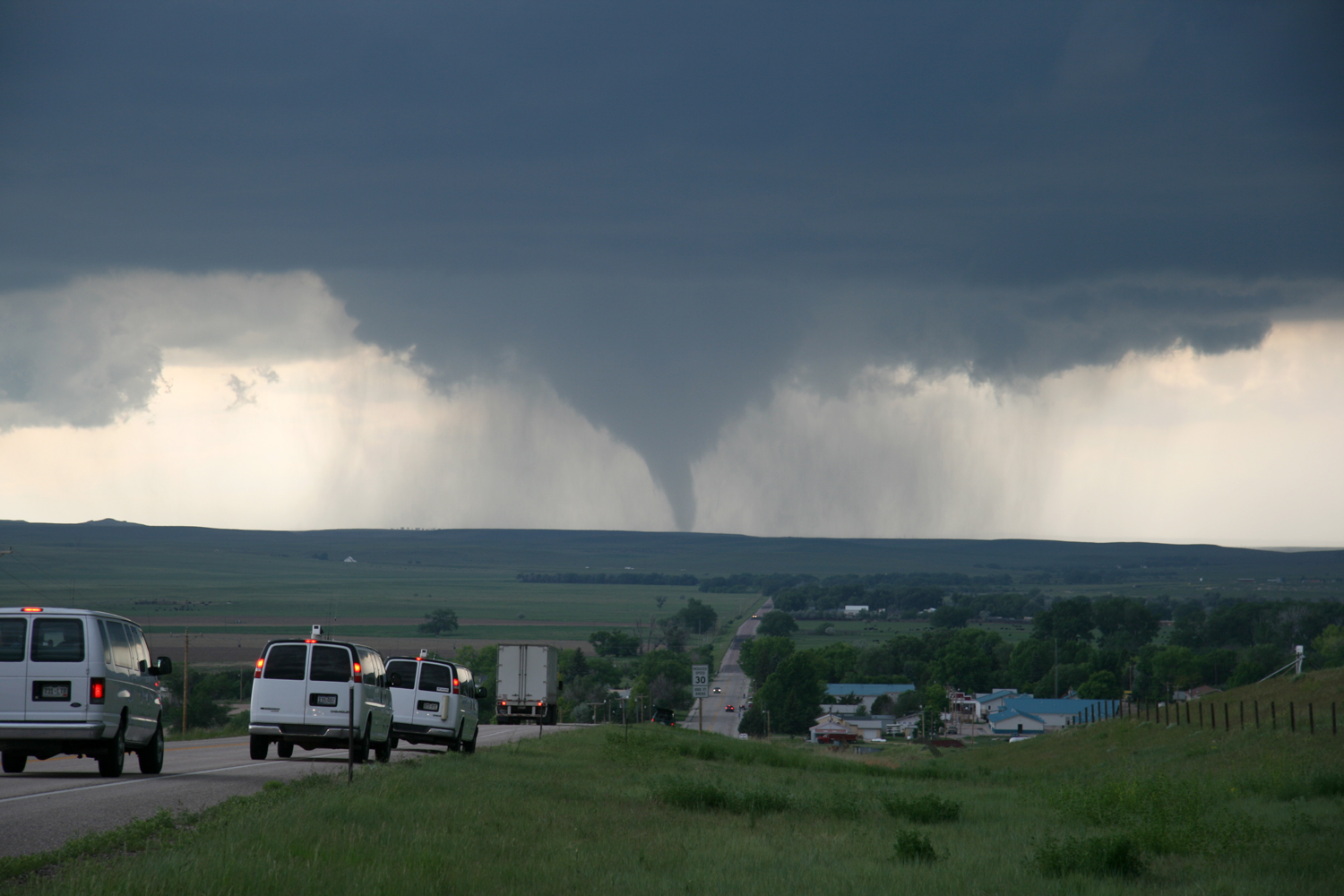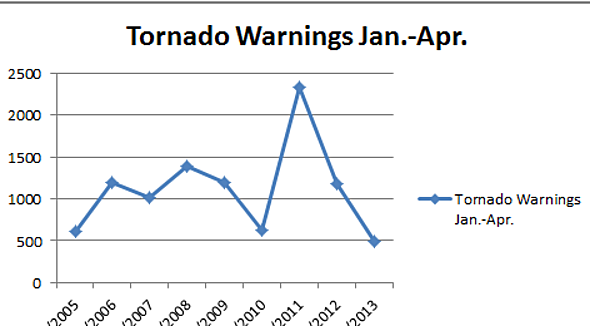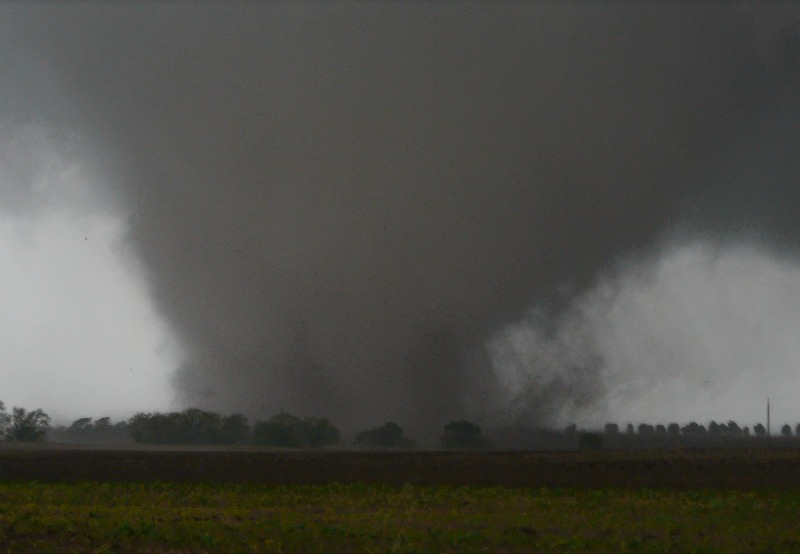
Science and Psychology: Why People Ignore Tornado Warnings

This article was provided by AccuWeather.com.
Despite advancements in tornado warning systems, 60 people die each year from tornadoes. With about 500 tornado warnings issued in 2013, this raises the question: why do people ignore tornado warnings?
"The United States tornado warnings and reports are at an all-time low so far this year, since the NWS began issuing warnings in polygon format in 2005," according to AccuWeather.com Meteorologist and Social Media Coordinator Jesse Ferrell.
About 500 tornado warnings have been broadcasted between January and April of this year, compared to more than 2,300 in 2011. Only 236 tornadoes have been reported so far this year; more than 1,000 were reported in 2011 as of this date.
The polygon system that was introduced by the National Weather Service in 2005 has improved the warning system by warning specific forecast areas rather than sticking to county borders. This is different from other warning systems because the projected path and warning area does not have to follow county borders, but it more accurately predicts where the tornado may hit rather than warning an entire county.
Despite advancements in the warning technology, people still ignore warnings every year resulting in damage to personal property, injury and death.

"It is an age-old question why people neglect to acknowledge tornado warnings," AccuWeather.com Expert Senior Meteorologist Henry Margusity said. People have become desensitized because too many false alarms are issued, he said.
Sign up for the Live Science daily newsletter now
Get the world’s most fascinating discoveries delivered straight to your inbox.
This is also often called ‘cry wolf syndrome,' according to AccuWeather.com Expert Senior Meteorologist Dan Kottlowski. People may begin to question if the warnings are accurate or will affect them. Kottlowski believes that people actually need to see the tornado in order to believe it will impact them.
Rotation that is visible to meteorologists on radar does not always indicate a tornado. When warnings are issued and tornadoes do not occur, people in the warned areas often develop complacency and are less reactive to future warnings.
Where people live also plays a role, Margusity said. If someone lives in an area where tornadoes may not be that common, they may not take a warning seriously.
Associate Department Head and Professor of Psychology at the Pennsylvania State University, Rich Carlson agrees. Residents who live in the Plains may wait to watch for the tornado because the topography of the land is flat. Residents believe they will be able to see a tornado approaching; however, in the East, this might not be the case.
"People have the illusion that they will see or hear the warning and have time to react," Carlson said.
Carlson also said that the probability factor plays a role.
When a tornado warning is broadcasted, Carlson said people may not react because they don't think the probability of the tornado striking their town or home is significant.
Another example of why viewers may ignore warnings is because they are desensitized by keywords that are used to describe storms such as "historic" and "deadly." The frequent use of these terms makes them less impactful to listeners. That is one reason that the media has begun to use terms such as "Frankenstorm" and "Snowpocalypse," according to AccuWeather.com Expert Senior Meteorologist Bernie Rayno. It ensures the event is taken seriously.
Harold Brooks, a senior scientist at the National Severe Storms Laboratory in Oklahoma, said that the likely reason for why people do not heed tornado warnings is because they just aren't paying attention or that they don't think the risk is high enough to seek shelter.
RELATED: Safety if Caught in a Car How to Seek Shelter and Stay Safe if a Tornado Strikes The Difference Between Tornado Watches and Warnings
The last reason that Carlson provides for why people ignore tornado warnings is because they have not witnessed the destruction and devastation that a tornado can leave behind.
Those that have experienced the effects of a tornado or know someone close to them that was affected by a tornado may be more inclined to take warnings seriously.
"Consequences are more vivid," he said. Without the experience, "They don't have the gut understanding of how serious it is."
"People may begin to heed warnings as false alarms decrease," Carlson said.
The NWS has begun using more enhanced wording in their warnings following the Joplin, Mo., tornado that caused massive destruction.
"This enhanced wording should help, but the NWS needs to be careful not to overuse this language or else the public will lose confidence in those warnings," he said.
AccuWeather.com. All rights reserved. More from AccuWeather.com.
The only sure thing about weather forecasts is that they’re wildly different all over the planet. Test your knowledge on the wild ranges in temperature, precipitation and more.
Extreme Weather Facts: Quiz Yourself











